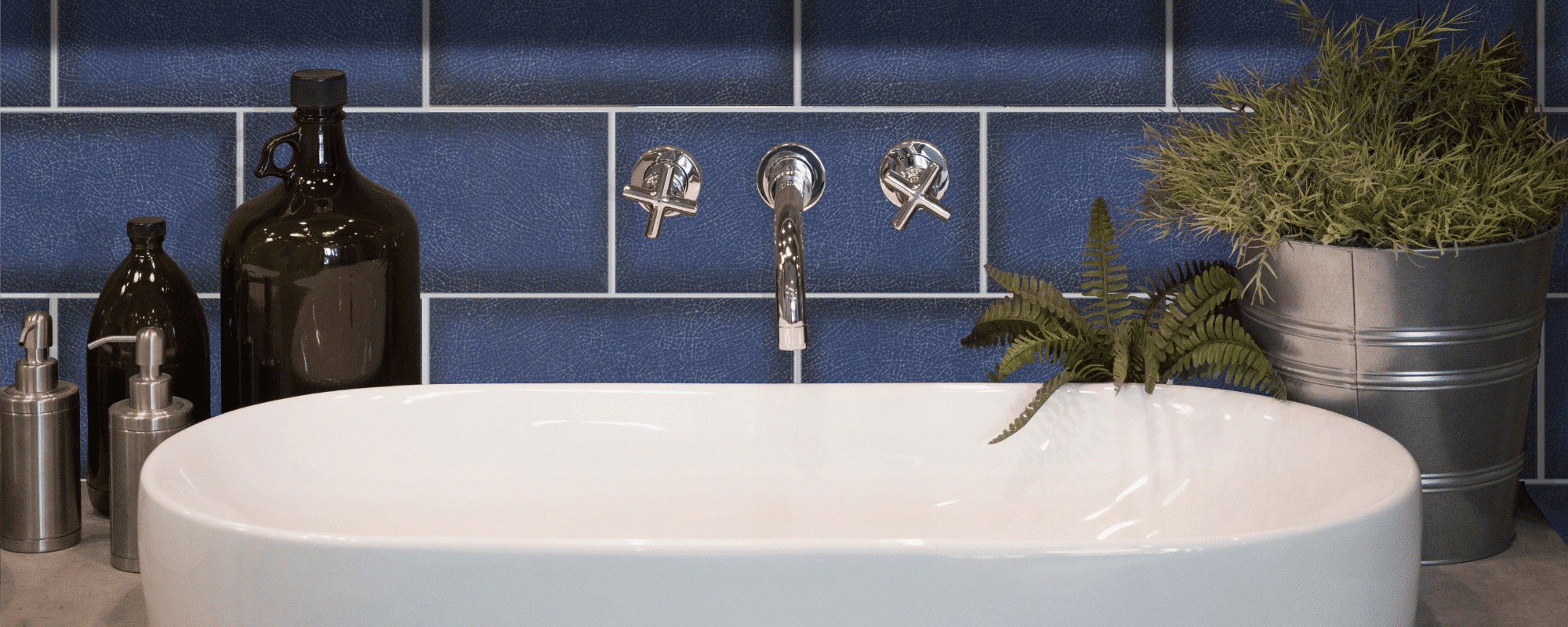Satinado? Honed? Levigato? Lappato? – They are all polished surfaces – which is which?
Homogenous polished porcelain tiles are the type where the recipe of raw materials within the body of the tile provides the surface effect to reproduce different types of stone, wood or marble for example.
Glazed porcelain tiles are the type where the body is comprised of similar porcelain ingredients, but the surface is applied by printing glaze onto it to reproduce stone, wood marble etc etc.
When pressed and fired the standard surface finish that homogenous or glazed porcelain tiles have is commonly referred to as ‘natural’ and is mat in texture.
This standard ‘natural’ finish can then be passed down a polishing line where a machine, which has a series of silicone carbide brushes ranging from very coarse to very fine (like different grades of sandpaper) rotates at high speed on the surface of the tiles to polish them.
With homogenous tiles, this process reduces the thickness by actually removing the surface during polishing, sometimes by up to 1.5mm. Homogenous porcelain is the hardest ceramic material so reducing the thickness in this way has no detrimental effect on the strength or durability of the tiles.
If the surface of homogenous tiles has no natural texture designed into it (i.e. is completely flat) the polishing can vary to achieve higher and higher levels of ‘shine’ and reflectiveness as follows
- Satinado – which has a texture smoother to the touch than natural, and a low level of reflectivity.
- Honed – which is even smoother and ‘softer’ to the touch, and slightly more reflective, but not ‘shiny’
- Levigato – a highly reflective shiny surface with a glass-like quality providing a very stunning visual effect
As the polishing process is done post-production, naturally it adds cost. More polishing equals more cost. Satinado costs appx 25% more than Natural, with Honed and Levigato at the same level commonly costing twice as much as Natural.
This image shows all four surface treatments to homogenous tiles, plus a heavily textured surface called Bocciadarto. Bocciadarto has Antislip certification – read more in our Antislip feature.
As the design of a homogenous porcelain tile is created within it – not applied to it, the polishing process enhances the characteristics of that design more and more significantly the more it is polished. For example, a marble design will appear stronger and more obvious with the darker and lighter tones becoming bolder in appearance than they would be on the surface of a natural unpolished version of the same tile.
Porcelain is such a hard material all these polished finishes are completely permanent, so will not scratch wear or fade in colour.
There is also a polishing treatment for homogenous or glazed porcelain tiles where the tile has a textured surface.
- Lappato
If the surface of the tile being polished has any texture in the design then polishing the surface removes the ‘high’ points of the texture to produce a semi-reflective effect, shiny at the top of the texture and not shiny lower down (note: we are talking very tiny degrees of difference in height here!)
This image shows the difference between a ‘natural’ surface textured tile (the one underneath) and the ‘lappato’ polished version of the same tile (the one on the top)
Lappato polishing can add up to 30% to the cost of a natural version – but the extra cost can vary downwards from 30% especially when glazed porcelain tiles are polished to lappato finish, as less polishing is required.


